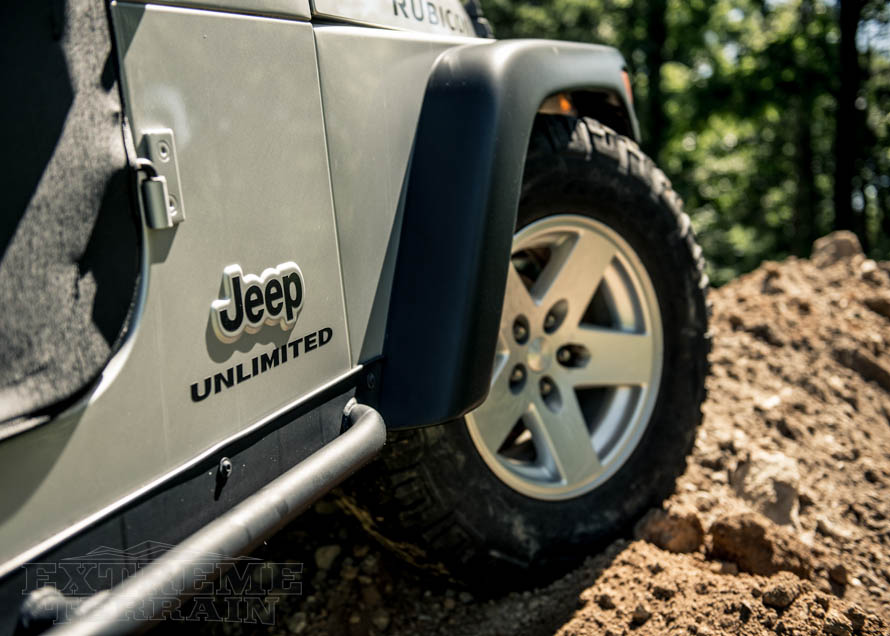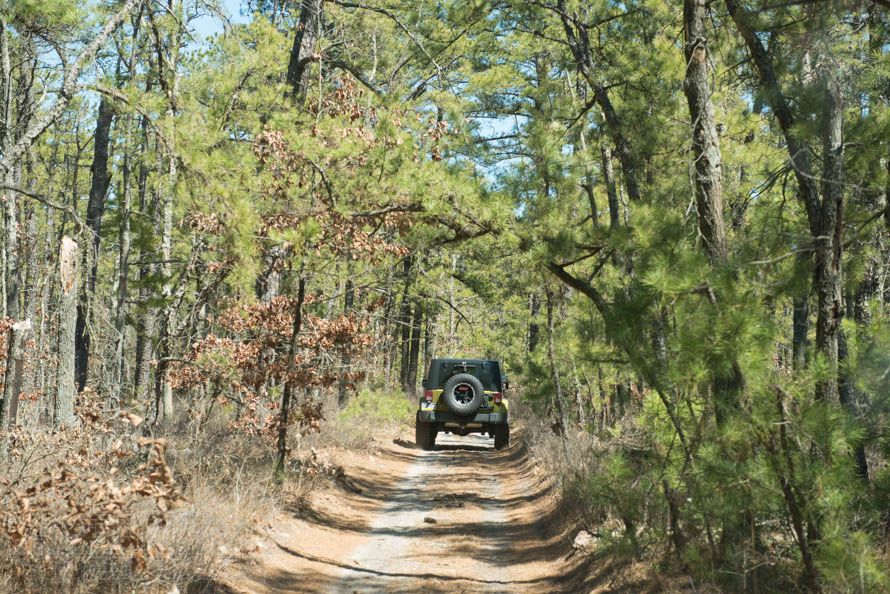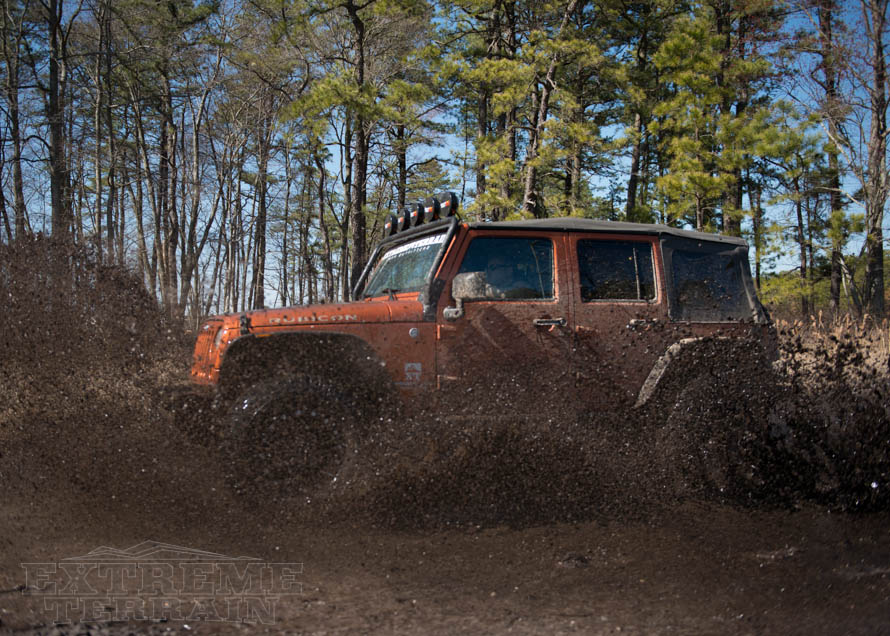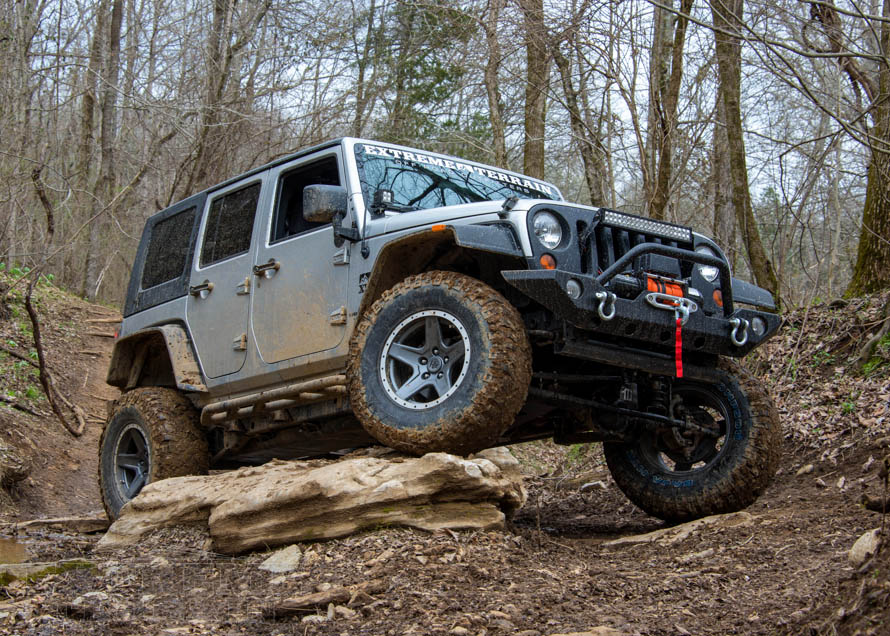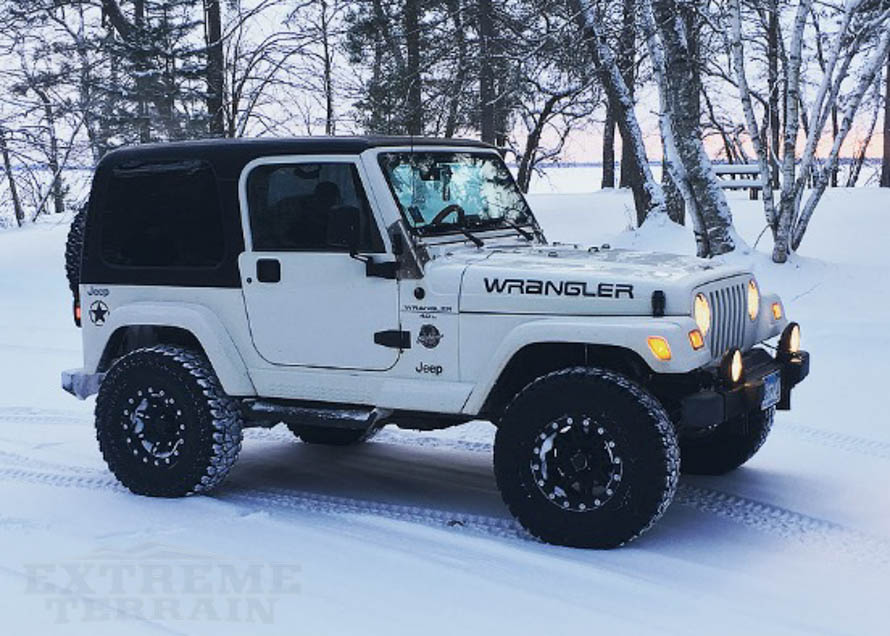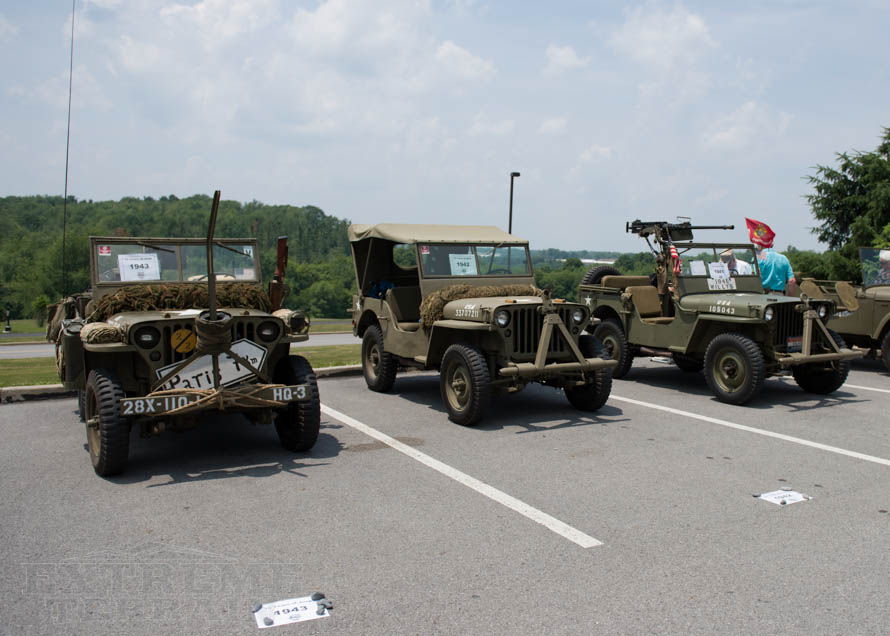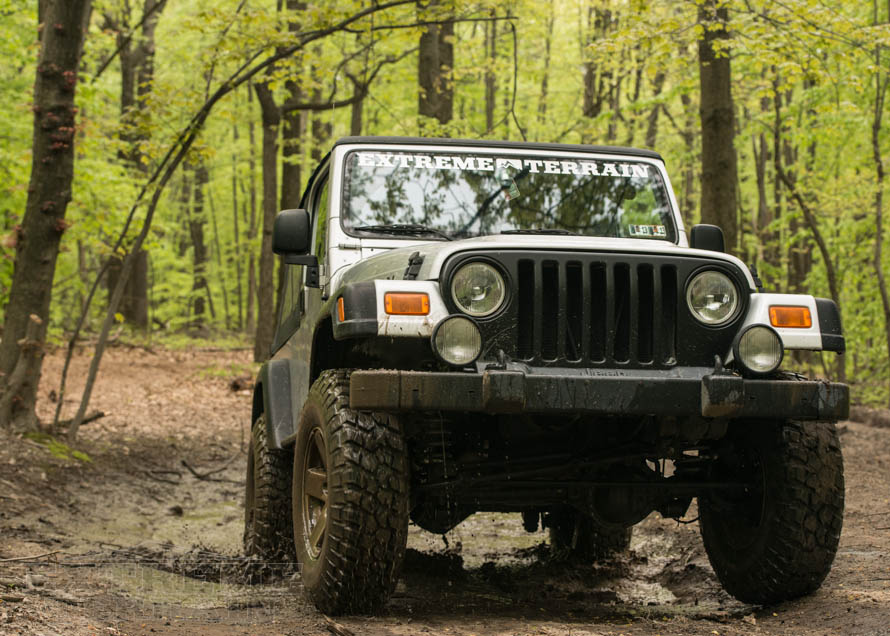There's no doubt about it; off-road driving is an absolute necessity for any outdoor enthusiast. You can't get into those secret fishing holes or that prime spot for ultimate wind-surfing without knowing which trails lead you there. When looking for these spots, remember to stay on the beaten path and only travel in areas open to four-wheel drive vehicles. If you've just purchased a Jeep and your head is full of off-road dreams, you're also probably wondering if the tires on your Jeep are the best ones for your plans.
Contents
- What's the Purpose of Your Wrangler?
- What's Airing Down & Why It's Important
- Stock Jeep Wrangler Tire Sizes
- Lift Kits and Jeep Wrangler Tire Sizes
- VIDEO: How to Fit 35 Inch Tires on Your Jeep JK
- Metric to Standard Tire Calculator
- Best Tires for the Daily Driven Jeep
- VIDEO: BF Goodrich All-Terrain Jeep Tire Review
- What are Jeep All-Terrain Tires?
- Jeep Wrangler Off-Road Tires - Mud Terrains (MTs)
- For the Rock Crawling Rigs
- Navigating Winter with Jeep Wrangler Snow Tires
- Streaking Across Sand
- Finding Tires for the Universal Jeep
- Tire Load Ratings
- Off-Roading Essentials
Shop Wrangler Tires
Having the right tires for the terrain is vitally important to successful wheeling. Plan ahead and equip your Jeep Wrangler with the tires it needs to get the job done.


